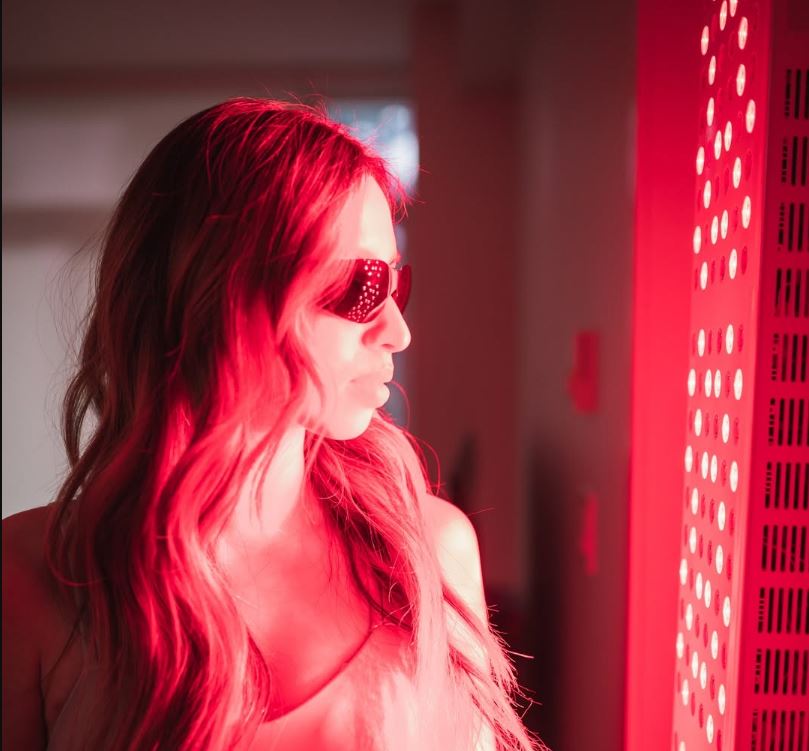![]() Free Shipping
Free Shipping ![]() Buy Now, Pay Later
Buy Now, Pay Later ![]() Eligible
Eligible
Red Light Therapy and Yeast Infections: A Natural Solution Worth Trying?

Yeast infections are a common yet frustrating problem for many women (and even some men). The itching, burning, and discomfort can disrupt daily life, and while antifungal creams and medications work for some, others seek alternative treatments. Could red light therapy (RLT) be the answer?
In this article, we’ll explore:
✔ What red light therapy is
✔ How it might help with yeast infections
✔ The science behind RLT and fungal infections
✔ How to use it safely at home
Let’s dive in!
What Is Red Light Therapy?
Red light therapy (also called low-level laser therapy or photobiomodulation) uses specific wavelengths of red and near-infrared light to penetrate the skin. Unlike UV light, which can damage cells, red light is gentle and promotes healing, circulation, and cellular repair.
Originally developed for wound healing and pain relief, RLT is now used for:
- Skin rejuvenation (acne, wrinkles)
- Muscle recovery
- Hair growth
- Fighting infections (bacterial & fungal)
But can it really help with stubborn yeast infections?
VELLGUS Elite V2
THE #1 RATED RED LIGHT DEVICE
VELLGUS pro V2
THE #1 RATED FULL BODY RED LIGHT DEVICE
How Red Light Therapy May Help Yeast Infections
Yeast infections are caused by an overgrowth of Candida, a type of fungus. Traditional treatments (like antifungals) work by killing the yeast, but RLT takes a different approach—strengthening your body’s natural defenses.
1. Boosts Immune Response
Studies suggest that red light therapy can:
✅ Enhance white blood cell activity (helping your body fight infections naturally)
✅ Reduce inflammation (calming redness and irritation)
✅ Improve blood flow (speeding up healing)
A stronger immune system = better ability to keep Candida in check.
2. Promotes Tissue Repair
Yeast infections can cause micro-tears and irritation in delicate tissues. RLT stimulates collagen production and cellular repair, helping damaged skin heal faster.
3. May Directly Inhibit Fungal Growth
Some research indicates that certain light wavelengths (like blue and red light) can slow fungal growth. While more studies are needed, early findings are promising.
What Does the Science Say?
- A 2013 study in Lasers in Medical Science found that red light therapy reduced fungal infections in nails (onychomycosis).
- A 2017 study in Photomedicine and Laser Surgery showed that RLT helped with wound healing and infection control.
- While no large-scale studies focus specifically on vaginal yeast infections, the anti-inflammatory and immune-boosting effects suggest potential benefits.
Bottom line: RLT isn’t a proven cure, but it may support recovery when used alongside traditional treatments.
How to Use Red Light Therapy for Yeast Infections
If you want to try RLT at home, here’s how:
Option 1: At-Home Red Light Devices
- Use a FDA-cleared red light panel or handheld device.
- Position the light 6-12 inches from the affected area.
- Sessions should last 5-15 minutes, 3-5 times per week.
- Always follow device instructions to avoid overuse.
Option 2: Professional Treatment
Some clinics offer red light therapy for vaginal health (often combined with other treatments). Ask a healthcare provider if this is an option for you.
Important Safety Tips
- Do NOT use RLT as a sole treatment for severe infections—always consult a doctor.
- Avoid overuse—more isn’t always better. Stick to recommended session lengths.
- Combine with probiotics & antifungals for best results.
Final Thoughts: Is It Worth Trying?
Red light therapy won’t replace antifungals overnight, but it could be a helpful addition to your yeast infection treatment plan. By reducing inflammation, boosting immunity, and promoting healing, RLT may help you recover faster—and prevent future flare-ups.
Have you tried red light therapy for yeast infections? Share your experience in the comments!








